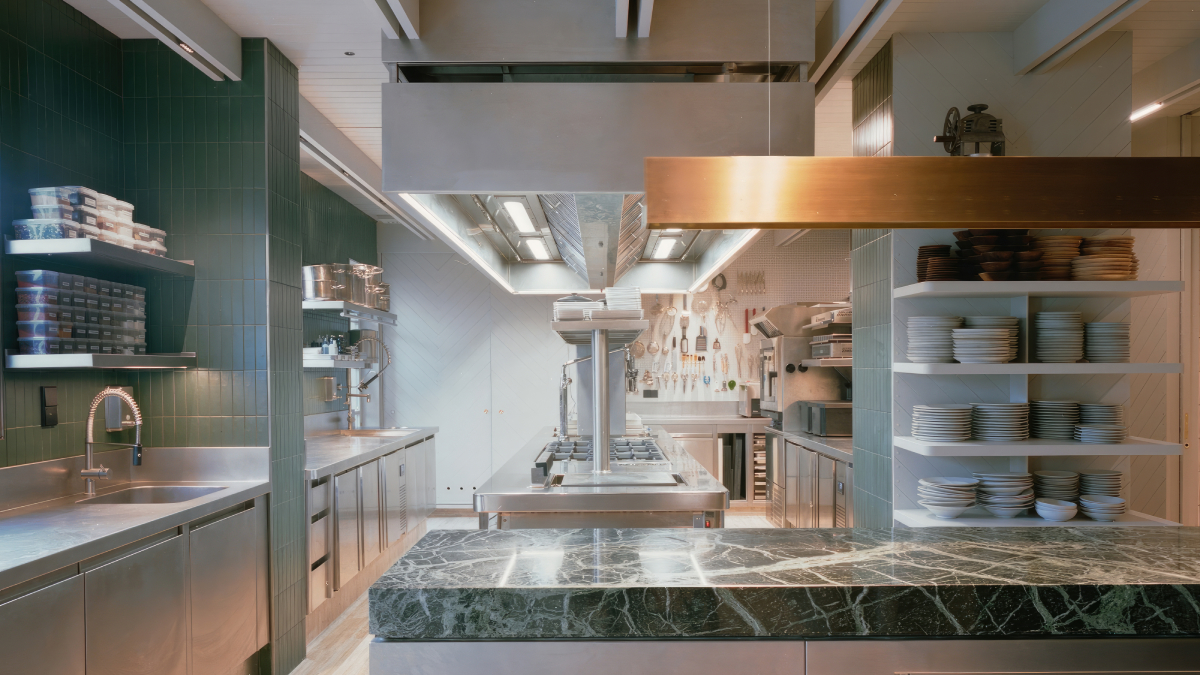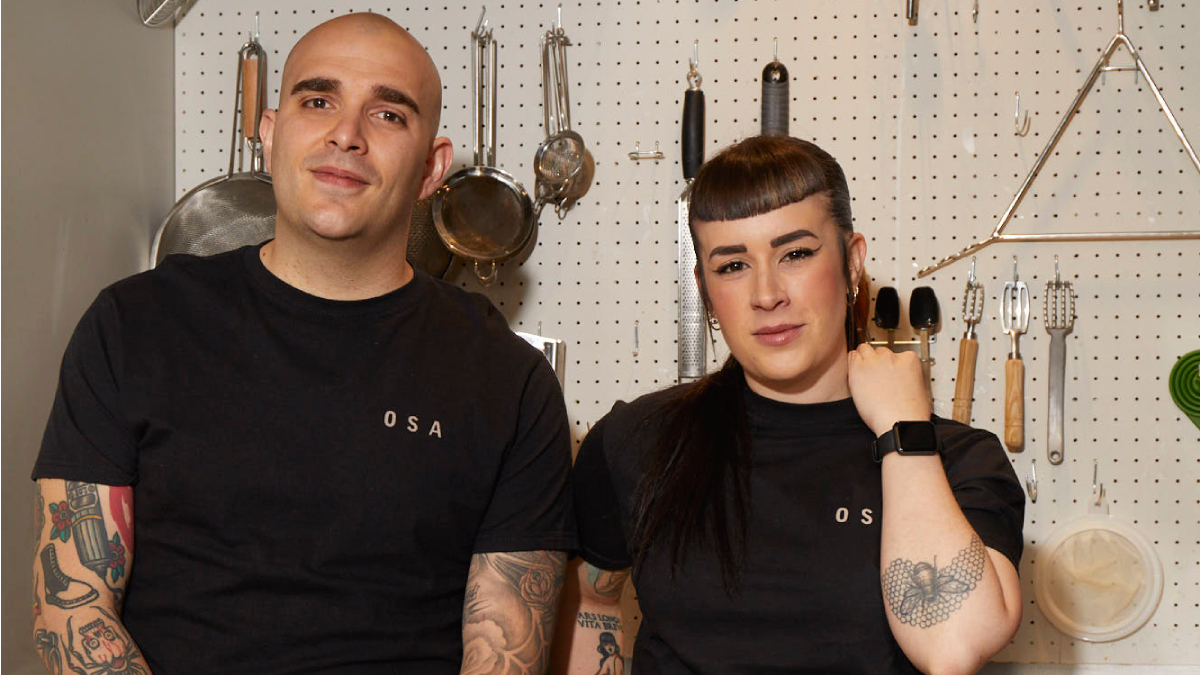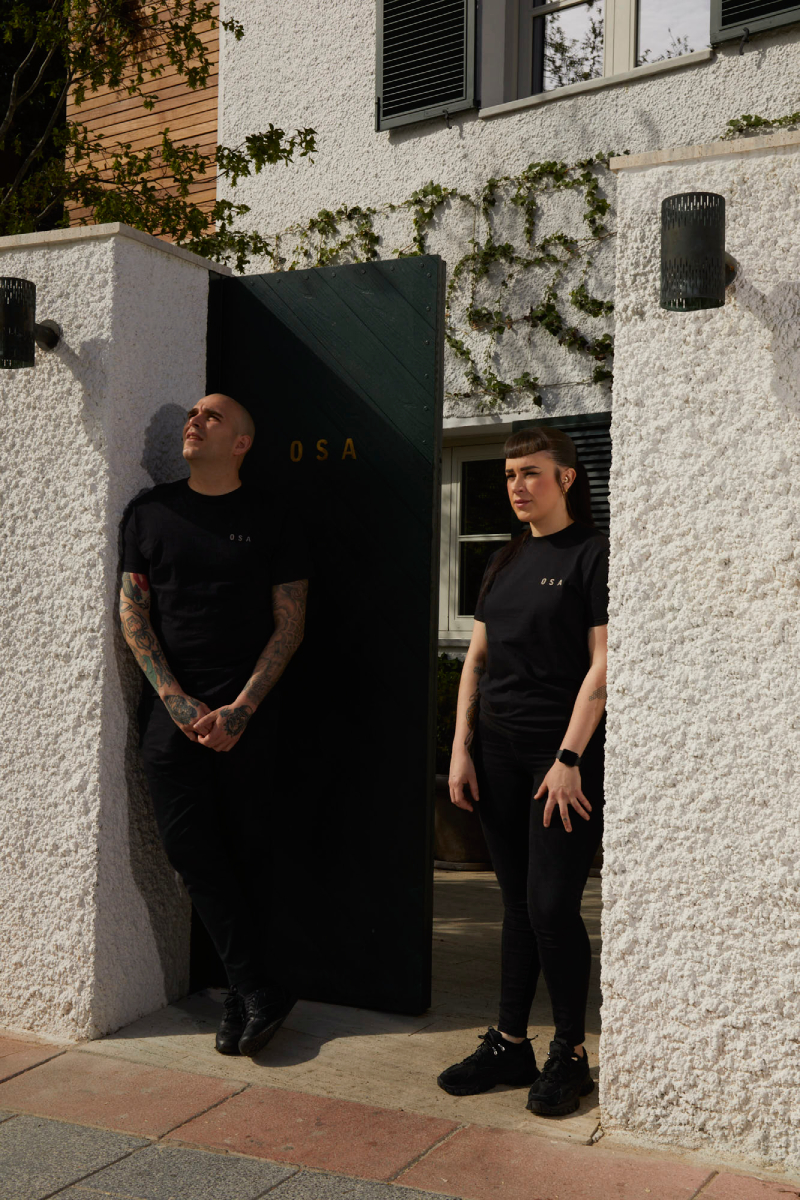Click here to read the Spanish version.
Sometimes dreams come true, and Jorge Muñoz and Sara Peral from Madrid had long fantasized about having a place where they could develop their particular concept of gastronomy. A very particular cuisine that goes beyond the stove and the plate to reach an atmosphere in itself, an atmosphere like the one generated by Frank Sinatra’s old songs, which nobody knew how to decipher, and for which he earned the nickname of The Voice. Sara and Jorge do not sing, but many people already refer to their “house”, OSA, as the restaurant.
Getting the whole gastronomic world to talk about a restaurant months before it opens is quite a marketing strategy. How have you experienced all this phenomenon around OSA?
SARA: Well, in reality, no marketing or anything prepared; on the contrary, what we wanted was for nothing to be known. Because in the end, expectations are the worst thing you can create. We didn’t even talk about it with our friends. This is like when you make a wish and if you tell them, it doesn’t come true. We started to work little by little, nobody knew anything. In fact, we got a lot of the rumors that were going around and we laughed. On the contrary, we are very discreet, very hard-working, and all this has come as much of a surprise to us as to the rest of the people.
JORGE: It is true, there is no communication agency, there is no marketing campaign… there is nothing, there is just a group of friends who believed in this. There is nothing, just a group of friends who have believed in this, who decided to rely on people who have a high gastronomic criterion or who have a lot of experience and who could tell us where we were going wrong or what we could improve. Because we wanted to start in the best possible way, not for the sake of posturing but to improve ourselves and become better people and cooks, both things.
Both of you have been in different kitchens, but the time you spent together at Mugaritz I think marked you in a special way.
SARA: It’s a before and after, like going to the military. Besides, after the military service I went to war, because after Mugaritz, I joined DiverXO. In my case it was very good for me because I got to be in the R&D process the following year and it was a great teaching when it came to developing the dishes and how to organize the process.
JORGE: It’s a before and after, like going to the military. Besides, after the military service I went to war, because after Mugaritz, I joined DiverXO. In my case it was very good for me because I got to be in the R&D process the following year and it was a great teaching when it came to developing the dishes and how to organize the process.
You have been working on the OSA concept for two years. How is the restaurant taking shape?
JORGE: There are many people who still don’t believe it, but for more than a year we didn’t touch the gastronomy. We were looking for the place and adapting it to what we had in mind. It was an exhaustive study of architecture, of spaces, of the experience, of creating moments like this: an interview in the middle of Madrid, with birds in the background, and free of everything.
The most important thing was to create an experience and a feeling of home, to build our house, and try to make it the house of Madrid at a gastronomic level. Also, OSA is a very small family where we all take care of everything and the detail costs twice as much. On the other hand, gastronomically, we started writing OSA’s menu in October last year. And that’s where we are. We were writing OSA in each gastronomic trip, in each gastronomic space of time… little by little.

Technique or product? What weighed on paper when you were developing the project?
SARA: I think the same. We advocate the product and the season, but the technique helps us to extol the product, and the truth is that we do a good “ten with ten”. And we have a guideline in the house: when we have a game product, we don’t touch it at all, it just goes through the grill. And when we have a farm animal, we give it a lot of technique, we treat it with a lot of care, a lot of observation, so we can compare it and put it at the same level.
JORGE: Technique or product is like saying Sara or Jorge. Behind a restaurant there doesn’t have to be just one chef, there are many other figures behind it. And I think the two of us make a very good tandem with the rest of the team. In the end, everything complements each other and that’s where excellence comes from.
Your cuisine has been defined as “culinary brutalism” and “false minimalism”. What do you think?
SARA: I don’t think it’s too far off. We advocate simplicity in the dishes. That is to say, what the customer sees is something very simple, but behind it there is an important work, so I do see that false minimalism.
JORGE: I prefer the word “sobriety”. In the end, gastronomic trends mark very specific words, and sobriety defines this space well, it’s like the material you step on when you enter or the one that covers the walls. And I understand that brutalist is to strip ourselves of everything and feel free to be what we are.
What do you want the dining experience at OSA to be like?
SARA: When we talk to clients, friends already, we always tell them that for us, OSA has to be like a vacation. You have to make up your mind, because that day you come, you let yourself go when you enter through that door. People come here as if they were coming to your house: they move freely, they go upstairs to look at the bottles, they go out to the garden… it’s a home. This is the idea that has finally remained.
JORGE: What Sara is saying is very important: OSA is not a restaurant to come every day. OSA is a date marked in red on the calendar. We like people to come to really enjoy the day, not to “collect” another restaurant.
SARA: We want to be a family, and treat you as we would treat our parents or our uncles and aunts. We like to “read” the diner, to know what each one likes, to get to know the people who come. In the end, that’s the way we have evolved in such a short time: by listening.
JORGE: The best example is that yesterday we had 22 diners and it will not happen again, because that does not represent us. We want people to feel that this is a shelter.
How do you conceive the menu for that date marked in red?
JORGE: First of all, look back and see how the kitchen equipment is doing.
SARA: Besides, not everyone eats the same thing and you don’t always have the same quality product. We have the product we have, and it’s more fun that way. If there are 20 diners, there are not 20 asparagus. Nor do we serve the same to those who come for the first time as we do to those who have come three times. The beauty of having a tasting menu is that, whatever we serve, it has to be perfect.
JORGE: The first time someone comes to OSA we try to set a specific menu, to make it comfortable, so that you get to the end well. And if you’ve been here several times, we already know you and we know where to go to make you enjoy it more, to make you think. We would like to do that exercise, to create a small database, like at elBulli, where at the end everybody knew what you ate, what you drank, where you sat, etc. We are trying to replicate that here, that you have your table, your place.
You have said: “We use national products, French technique and Japanese sensibility”. Where does this way of defining yourself come from?
JORGE: That arose from the fact that people kept asking us, “What are you going to cook, do you do Mediterranean cuisine? And I don’t think we know how to answer that question.
SARA: Sure, and that answer is the one that best defined us. It’s not what we cook but how we cook it.
JORGE: We try to look for the best product, wherever it comes from, treat it with the best technique, which for us the French have been doing for many years, and Japan as a sign of that sobriety and sensitivity. And with all that, we build a menu from the beginning to the end, and every little bit adds up. And that grain of sand means Japan for us.
OSA’s impressive wine cellar is another of the issues that do not leave the diner indifferent.
JORGE: For us it was essential to build a team and a year and a half ago and a half ago we tried to incorporate great professionals who came from great houses or from projects where we saw soul, and that is how we came to our sommelier, Silvia Machado. Backed by Fernando Cuenllas, who is also part of the project, I think we have made the perfect team. Silvia has achieved a very specific symbiosis with the palate. It is not enough that a wine masks a dish or that a dish masks a wine, or that they make us a collection of labels just for the sake of it. Just as we shy away from great dishes and great products that are in fashion, here we do not have great labels but great producers, great vintages, very Martian projects, very traditional projects? The winery is a bit like a reflection of the kitchen, where there is a lot of everything but always with a lot of criteria.


